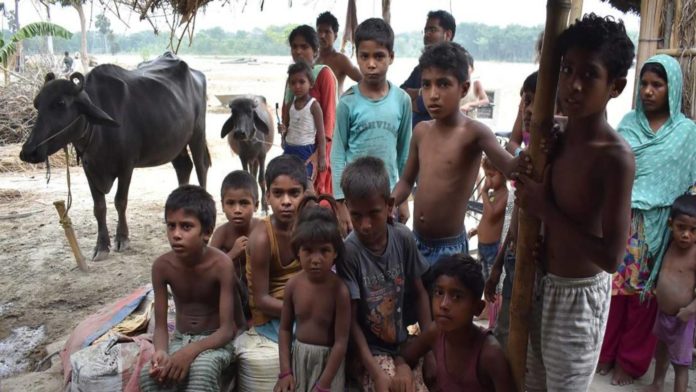In spite of marked improvements in the levels of poverty in Ethiopia, 90% of children under the age of 10 are poor, according to a new UN Development Program report. This sobering statistic was highlighted in a media briefing by UNDP Resident Representative for Ethiopia Turhan Saleh and UNDP National Economist Haile Kibret in connection with the release of the 2019 Global Multidimensional Poverty Index (MPI). Despite improvements in the overall poverty levels in the country, the fact that too many children remain in deep poverty is a serious cause of concern, according to Saleh. “We have some work left,” he said. “The rate at which population is growing is faster than the rate at which poverty is being reduced.”
Also, he added that “The 2019 global MPI paints a detailed picture of poverty for 101 countries and 1,119 subnational regions covering 76% of the global population, going beyond simple income-based measures to look at how people experience poverty every day,” a UNDP press release. According to the 2009 MPI: “Sub-Saharan Africa and South Asia are home to the largest proportion of multidimensionally poor people (84.5% of all multidimensionally poor people live in these two regions), but the incidence of multidimensional poverty various enormously across countries.” “In Sub-Saharan Africa, it goes from 6.3% in South Africa to 91.9% in South Sudan. In South Asia, it ranges from 0.8% in the Maldives to 55.9% in Afghanistan.”
CENTER FOR AFRICAN STUDIES
Center for Africa Studies (AFRAM) which located in Ankara, is an organization facilitating under the administration of African Affairs Council (AFAC). It makes various researches about Africa to enhance economic and cultural bounds between Africa and Turkey. AFRAM’s publishings has been shared with different institutions as they require to obtain.
AFRICA OBSERVATORY
Africa Observatory is one the publishing of AFRAM and it has been published each two weeks. It has been delivered to different institutions via e-mail.






